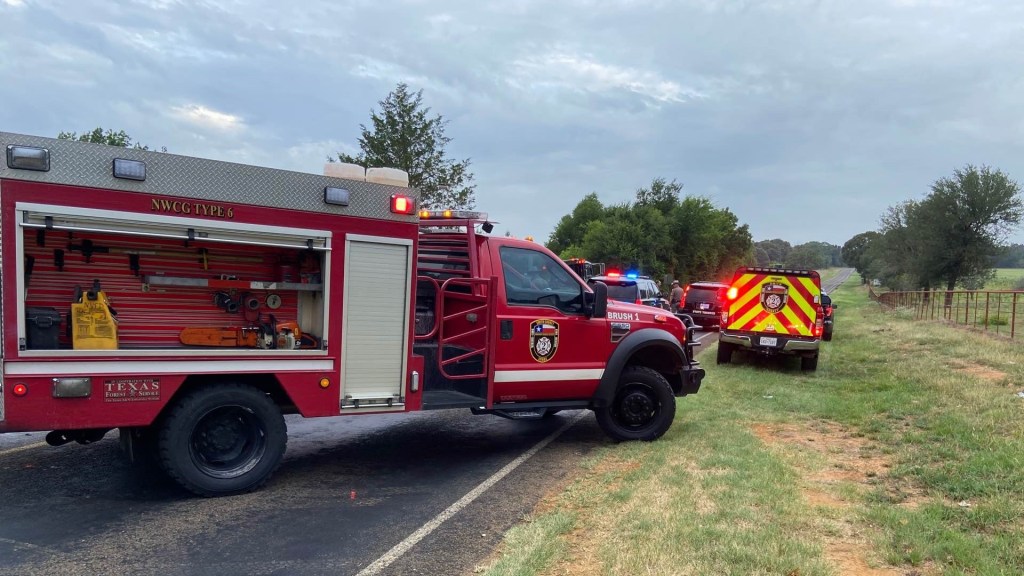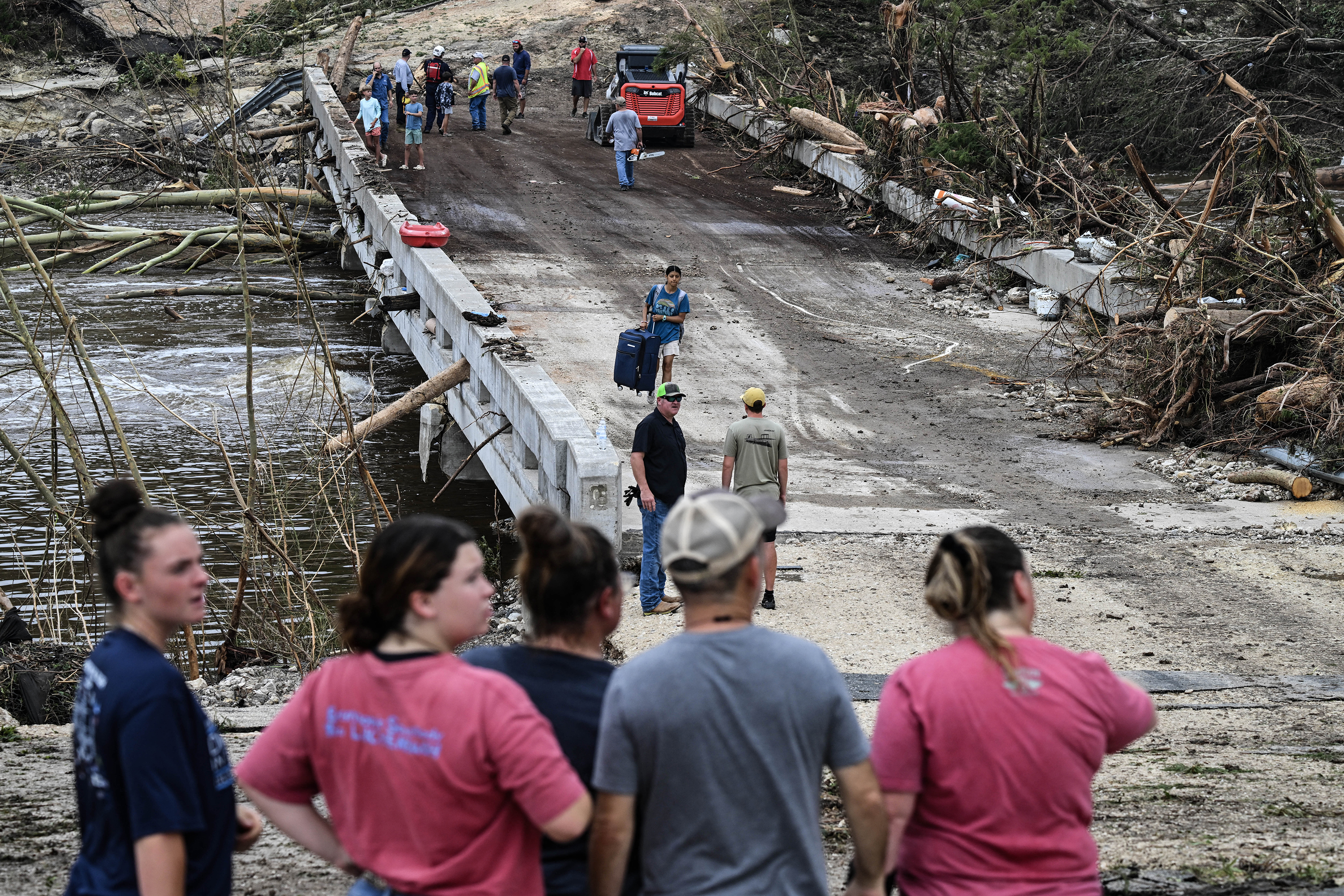Firefighter’s close call highlights safety law
Published 5:45 am Thursday, August 1, 2024

- Crews work the scene of a crash on Texas 110 North in Smith County at CR 48 in which officials say five people were killed in July 2022. The number of fatal crashes in TxDOT’s Tyler District decreased in 2024. (CBS19 Photo)
After a Smith County Emergency Service District 2 firefighter was hit by a car on the job, it highlights ongoing worries about keeping first responders and crews safe on the roads.
“Remember that those might be your loved ones, those might be your friends, your neighbors. They certainly have families,” said Smith County ESD 2 Fire Chief Eric Greaser. “One unfortunate event or incident may change the firefighters’ lives and their families’ lives forever.”
Greaser and Division Chief of Training Cory Clanton issued a rallying call to drivers navigating emergency scenes and provided insights into safety procedures.
On July 21, ESD 2 firefighter Brett Lester was struck by a car while responding to the scene of a wreck. Lester was transported to the hospital for treatment and has since been released to recover.
Greaser said Lester was able to jump away from the car and avoid the full impact but emphasized that the situation could have ended much differently.
“As fire chief, those are the calls that no chief ever wants to have,” Greaser said.
This incident is the second time in the past month that a firefighter from the district has been struck by a vehicle. In other cases, emergency vehicles and equipment have been hit and severely damaged or destroyed due to driver negligence.
Move Over, Slow Down
Nov. 7, 2000, was the last deathless day on Texas roadways, according to TxDOT.
In the U.S., approximately 23 workers per day — across fields such as construction, EMS, law enforcement and firefighting — are struck while working in roadway work areas, Clanton said.
“That is startling statistics, and I think it speaks volumes to exactly what we’re dealing with out there,” Clanton said.
Just over two years ago in July 2022, Smith County Deputy Lorenzo Bustos, 29, was working a traffic stop just before midnight when he was struck and killed by a drunk driver. His patrol vehicle was pulled over with its emergency lights on at the time of the crash.
First responders must anticipate that any vehicle approaching the highway could be driven by someone who is impaired. This is why they take a defensive stance with their vehicles, ensuring that if an impact occurs, it doesn’t directly involve firefighters, law enforcement, EMS, or other individuals on the scene.
They use barriers and equipment to create a buffer between responders and oncoming traffic. Additionally, they work hard to provide early notifications to motorists approaching accident scenes or work areas.
The focus is on playing a strong defensive game to keep everyone as safe as possible, Greaser said.
“All are trained and encouraged all the time to keep a situational awareness of the threats and risk that you might encounter on a particular scene,” Greaser said. “It’s so important that we gain situational awareness and that we maintain that awareness throughout the entire incident.”
While responding to emergency situations, first responders have various methods in place to ensure safety, but ultimately, drivers need to be aware, slow down and be patient.
The state’s Move Over or Slow Down law requires drivers to either move over — creating a lane of space between themselves and roadside workers — or reduce their speed to 20 mph below the posted limit when passing law enforcement, tow trucks, utility vehicles, emergency responders and TxDOT vehicles stopped with activated overhead lights on the side of the road.
Changes to the law, effective Sept. 1, 2023, impose heftier penalties for violations, including fines of up to $1,250 for a first offense. Stricter penalties for drivers who cause serious injuries by failing to follow these rules now include possible jail time and fines of up to $4,000.
Millions of Texans commute to work on highways every week, they pass inches away from the worksites of thousands of law enforcement personnel, first responders, and road maintenance crews.
“We really ask all who travel the roadways, to remember that construction workers are operating on the roadway, public safety is operating out on these roadways, and we need people to both slow down when they approach a scene and to move over,” Greaser said.
Safety procedures
Emergency responders use blocking apparatus, trucks equipped with impact attenuators (or crash cushions), and signage to alert oncoming traffic as they approach the scene. It also features an energy absorption device designed to minimize damage to the vehicle that hits it.
The goal is to reduce the risk of fatal injuries for the driver involved in the collision. Most importantly, this setup aims to protect fire responders working on high-speed roadways, like interstates, from being directly struck by vehicles entering the scene.
When a vehicle enters an emergency scene where responders are using equipment like the jaws of life, removing patients and loading them into ambulances, it exposes firefighters, police officers and paramedics to oncoming traffic.
This increased risk often results in vehicles striking emergency apparatus. In his year and a half with the department, Greaser reported approximately four apparatus have been struck on the roadway.
“That volume is just quite large in terms of how frequent that happens,” Greaser said. “It’s very challenging.”
At any given time, major metroplexes may have dozens of fire trucks, ambulances, and other response vehicles in the shop that have been severely damaged on the roadway.
“Not only is it taxpayer dollars, but we don’t have an unlimited number of trucks,” Greaser said. “Today’s replacement trucks are both more expensive than ever, and the turnaround time to get one ordered, built and delivered is some in some cases, upwards of three years.”
When those trucks get damaged, it really puts the department in a tough spot. Last year, during a crunch, they had to quickly buy a used truck from Alabama just to keep up with demand.
It was an urgent purchase to fill a critical need.
The department aims to establish a temporary work zone with advance warning signage when possible, although they don’t have enough signs to cover the entire county. They use cones to narrow the lanes of traffic, creating a funnel effect.
This method helps to slow down vehicles and guide them more carefully around the scene.
Emergency trucks are equipped with lights that are scientifically designed for maximum visibility. The intensity and color of the lights are crucial for safety on the roadway.
Additionally, modern fire trucks feature a national standard called chevroning on their rear. This pattern is designed to direct approaching drivers to steer away from the back of the truck. While the chevrons are intended to enhance visibility and safety, they don’t always prevent collisions.
Distracted drivers
Department members are required to wear protective equipment with reflective elements, including vests and helmets, whenever they are on the roadway. This gear is designed to provide personal protection and enhance visibility, preparing them for worst-case scenarios and ensuring they have some level of safety in the event of an accident.
“Those are the kinds of things that are done to slow the traffic down and to try and give advanced warning so that cars are able to see what’s happening,” Greaser said. “But, today’s drivers are so distracted. There’s so many things happening inside the car.”
There are numerous distractions for drivers today, from entertainment systems and tightly encapsulated vehicle designs to personal devices and social media. People are often texting or engaging with various apps, which diverts their attention from the road.
Society is also grappling with impairments caused by both prescribed and non-prescribed medications, Greaser said. Many drivers may not be under the influence of alcohol but are still impaired in some way, leading to slower reactions and increased risk on the road.
Clanton said when a responder is struck in the field, his mind goes to their families, he said, “I think of their wife, I see their faces, and I wonder what the future holds for them.”
“I would just ask that the public show some amount of patience and compassion because at a moment’s turn when we’re in a hurry and impatient, we could affect someone’s life drastically,” Clanton said. “That’s a significant event, both for the individual who’s injured or killed their children, their family members and for that driver that did that. Those are things you don’t easily get over and I think a lot of consideration needs to be given to that.”






